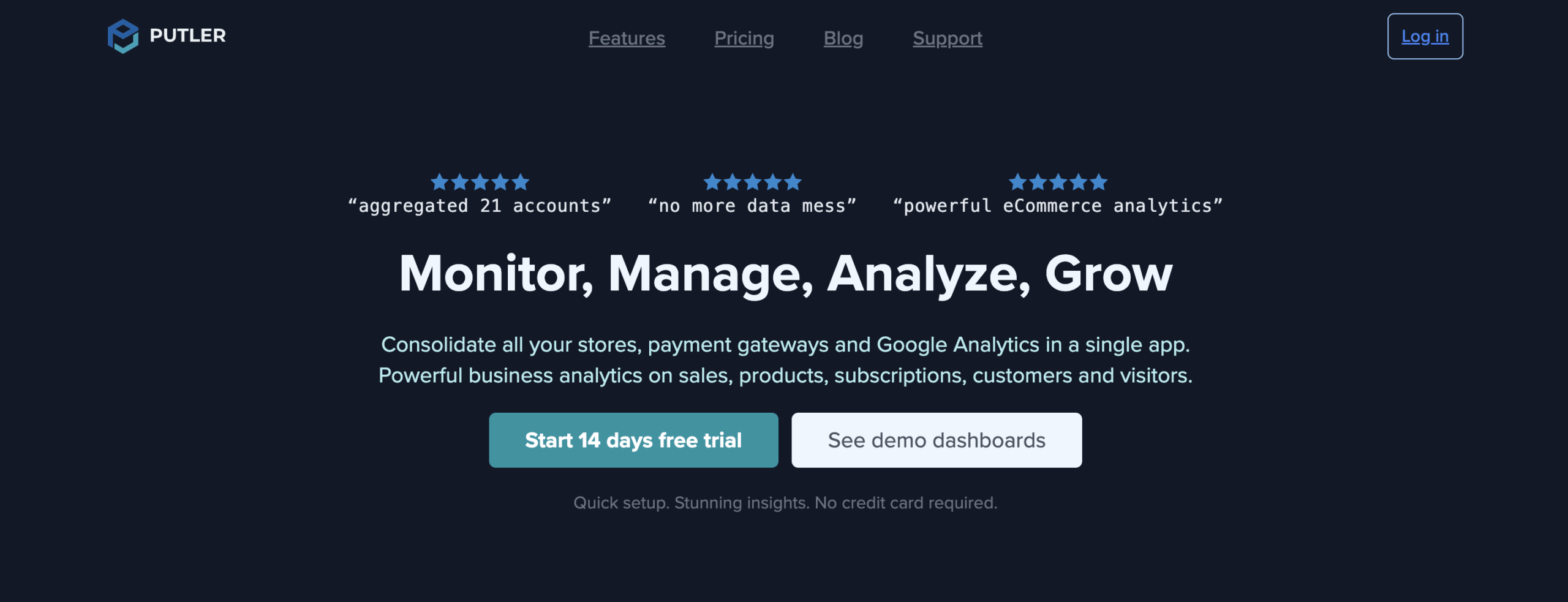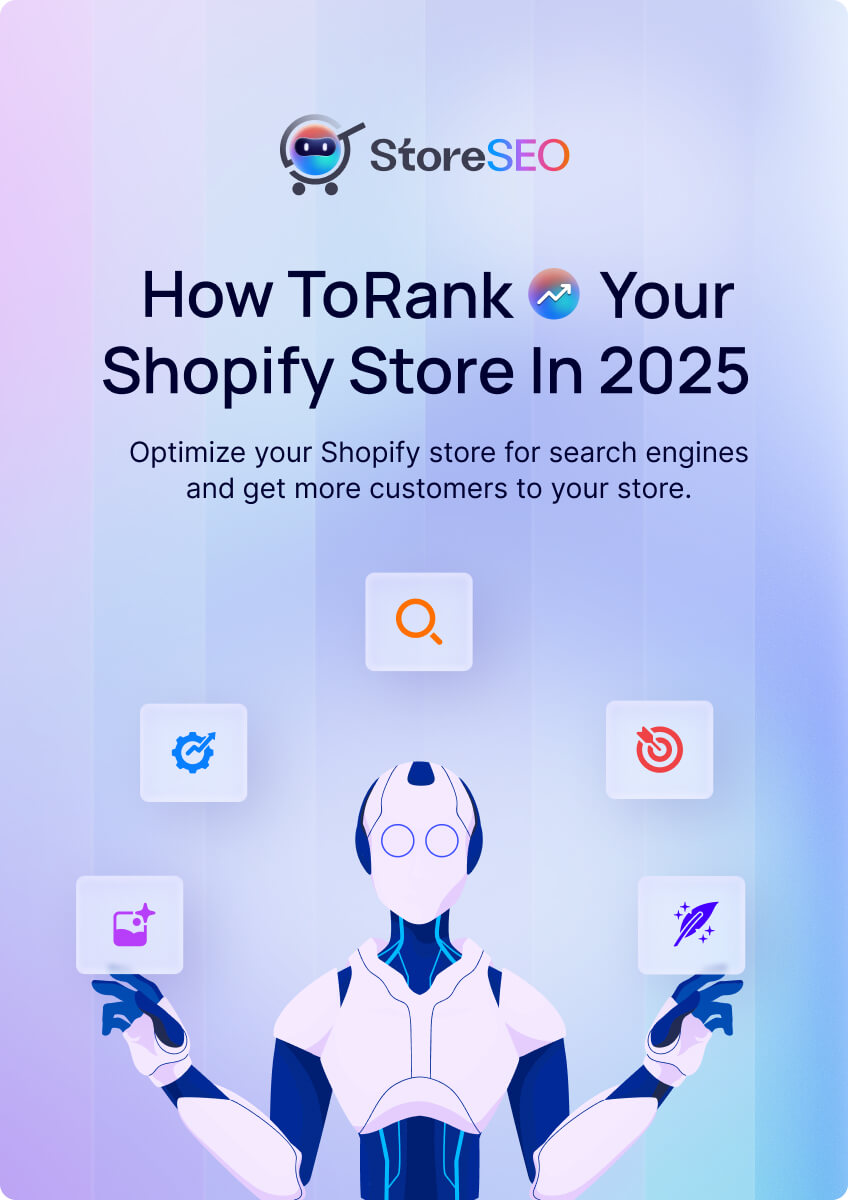Shopify merchants generate over $300 billion in economic activity annually. Impressive, right?
But here’s what they don’t tell you, the lion’s share of that $300 billion goes to a few elite stores, while the rest are barely hanging on.
And a big reason for that? They’re relying on Shopify analytics.
Sure, Shopify tells you the “what,” but it completely misses the “why” and “what’s next.”
Want to know what Shopify analytics is missing and how you can fix it? Stick around. We promise you’ll walk away smarter when it comes to analytics in Shopify.

What Shopify’s Native Analytics Fails to Deliver?
Shopify is a brilliant platform for setting up and running an e-Commerce store. But, and this is a big but, when it comes to digging deep into analytics and really understanding your business, it leaves quite a bit on the table.
Let us break down the key gaps, especially for startups:
- A narrow view: Shopify analytics focus solely on what is happening in the store itself. So, what happens to all that critical data from payment gateways, other eCommerce platforms, shopping carts, or even Google Analytics? – Completely absent. This leads to a short-sighted understanding of your business performance measurement when it comes to analytics in Shopify.
- Last-touch attribution tunnel vision: Shopify relies on the last-touch model, so it only credits the final interaction before purchase. So, everything that happened along the customer journey before that is largely ignored. This simply means you are missing the rich tapestry of touchpoints that lead to conversions.
- Shallow segmentation: Basic segmentation is all you get from Shopify Analytics. No micro-segments, no ability to dig into high-value customers or identify those at risk of churn. You are flying blind when it comes to deeply understanding customer behavior and implementing valuable data into strategies.
- No predictive analytics: Want to forecast trends and predict revenue or customers you will acquire? Shopify does not provide the tools for that, leaving you with reactive rather than proactive insights.
- Weak customer, product, and sales analysis: It is hard to make strategic decisions when the platform does not offer detailed, actionable data on your best-selling products or top-performing customer segments.
- No heatmaps: Without heatmaps, you’re missing out on a visual representation of how users interact with your store or their peak times to visit your store.
- Missed cross-sell and up-sell opportunities: Shopify does not give you insights on potential cross-sell or up-sell opportunities, which means you could be leaving money on the table without even realizing it.
To sum it up: Shopify analytics is a solid tool for basic reporting, but if you are looking to grow, optimize, and understand your business from every angle, you need more powerful, detailed insights.
Must-have Reports for Shopify Store Success
If making good money on Shopify is your goal, here is a list of all the reports that are your must-haves.
Complete Sales Overview
A comprehensive sales dashboard is the heartbeat of your eCommerce analytics. This report should give you a clear picture of:
- Your overall revenue performance across different platforms (Shopify, PayPal, Stripe, etc.).
- How your sales are trending over time?
- How are you doing compared to previous periods?
- How well are you converting visitors into customers?
By visualizing revenue across various platforms, you can quickly gauge your store’s health and spot areas that need attention, regardless of where the sale occurs.
Detailed Customer Information
Understanding your customers is key to growing your business. Look for reports that help you:
- Identify your most valuable customers.
- See how many new customers you are gaining vs. returning ones.
- Group your customers based on their buying habits.
- Understand customer demographics and preferences.
These insights allow you to tailor your marketing efforts, improve customer retention strategies, and create more personalized shopping experiences.
In-depth Product Performance
Knowing which products are stars and which are underperforming is essential. Your product reports should help you:
- Identify your best and worst-selling items.
- Understand which products are most profitable.
- Keep track of your inventory efficiency.
- Spot opportunities for product bundling or upselling.
- Monitor which products are frequently returned.
This information helps you decide what to stock, promote, or potentially discontinue, ensuring your inventory aligns with customer demand and profitability goals.
Sales Predictions and Forecasting
Looking ahead is crucial for sustainable growth. Seek out reports that help you:
- Project potential revenue growth scenarios.
- Estimate future sales based on current trends and growth rates.
- Use predictive analytics to optimize stock levels.
These forward-looking insights can help you prepare for rapid growth, set ambitious yet achievable goals, and make informed decisions about inventory and marketing investments.
Refunds and Disputes
Tracking returns and customer issues is crucial for maintaining profitability and customer satisfaction. Look for reports that show you:
- How often are items being returned?
- Common reasons for refunds.
- How frequently do disputes arise and how are they resolved?
- Which products cause the most customer dissatisfaction?
- The impact of refunds and disputes on your overall revenue.
This information can help you improve your products, make your descriptions more accurate, enhance your customer service, and ultimately reduce the frequency of refunds and disputes.
Website Visitor Behavior
Understanding how visitors interact with your Shopify store is key to optimizing conversions. Valuable insights include:
- Where does your traffic come from?
- Which pages are most popular (and which are not)?
- How long do people stay on your site?
- How often do people add items to a cart but do not purchase them?
- Which parts of your page do visitors interact with most?
With these insights, you can make data-driven adjustments, such as improving content or streamlining navigation, to enhance user engagement.
How Putler helps solve these problems
Putler is an advanced Shopify analytics tool designed to address the gaps left by native Shopify analytics.

It does not just give you data, it delivers a complete, detailed picture of your business. And the best part? It is all presented in a clean, user-friendly dashboard that makes complex insights easy to digest. Let us dive in and see how Putler solves each of these problems step by step.
Bringing all your data together

What it is: Data fragmentation is one of the biggest challenges businesses face. Putler solves this by integrating data from 17+ sources, including eCommerce stores, shopping carts, payment platforms, and even Google Analytics. It consolidates data from these diverse streams, removes duplicates, and gives you a single, clear view of your performance.
Why this matters: Imagine having to check your Shopify dashboard, then head over to PayPal, then Stripe, and do not forget about Google Analytics. That is messy and inefficient. With Putler, all your data speaks the same language and is in the same place. You get clarity, not chaos.
Understanding Your Customers Better

What it is: Customers are the lifeblood of your business. Putler gives you detailed insights into who they are, their demographics, preferences, and behavior patterns. You can track new vs. returning customers, LTV, revenue per customer, total revenue, and more. Putler goes one step further and creates in-depth customer profiles, pulling data from all connected platforms.
Why this matters: Knowing your customers means knowing how to sell to them. With Putler’s unified profiles, you are not just seeing numbers—you are seeing people, their habits, their loyalty. You can finally stop treating all customers the same and start personalizing your approach, improving retention, and boosting lifetime value.
Getting More From Your Product Data

What it is: Putler’s detailed Products dashboard gives you a comprehensive performance history, so you can track how each product has performed over time. This includes everything from gross revenue, top 20% products, and product-specific sales. Additionally, Putler provides insights into frequently bought products, helping you with upselling strategies and building data-backed bundles.
Why this matters: Not all products are created equal. With Putler, you know exactly which products drive the majority of your revenue and which are dead weight. Armed with this data, you can make smarter decisions like promoting your top performers or bundling slow movers to boost sales.
Using Sales Data to Grow your Store

What it is: Putler provides a range of sales metrics that include net sales, daily averages, orders, sales predictions, Monthly Recurring Revenue (MRR), churn rate, refunds, and more. You can even drill down into transaction details for individual customers.
Why this matters: Sales metrics are more than just numbers, they are the pulse of your business. Putler helps you track the health of your store, highlighting key trends and letting you adjust your strategy on the fly. Is MRR growing or stagnating? Are refunds creeping up? Putler gives you the full picture so you can address potential issues before they become major problems.
Managing Subscriptions Smarter

What it is: For businesses with subscription models, Putler offers a dedicated dashboard to track Monthly Recurring Revenue (MRR), churn rate, active subscriptions, Average Revenue Per User (ARPU), Customer Lifetime Value (LTV), and more.
Why this matters: Subscriptions are gold for an eCommerce business’s steady and predictable income. But keeping churn under control is the real challenge. With Putler, you can take proactive steps to reduce cancelations and keep those recurring payments rolling in.
Predicting Future Sales

What it is: Putler’s predictive analytics features allow you to estimate future sales and customer growth based on current trends. You can even run 10x growth scenarios to see how scaling your store could impact performance.
Why this matters: Predictive analytics take the guesswork out of growth. It’s helpful if you want to plan for scaling your business, whether by hiring more staff, increasing ad spend, or ordering more inventory. You can make these decisions based on data.
Spotting Peak Times

What it is: Putler’s Sales Heatmap gives you a visual representation of sales activity, highlighting the best and worst days and times for making sales.
Why this matters: Timing is everything. With the heatmap, you can identify when your customers are most active and tailor your marketing and promotions to those peak times. If you know that sales spike every Wednesday afternoon, you can launch campaigns or promotions to take full advantage.
Making Shopping Personal for Each Customer

What it is: Putler has an advanced customer segmentation tool called RFM (Recency, Frequency, Monetary) analysis to categorize customers into segments like “Champions,” “Loyal Customers,” “Promising,” and “At Risk.”
Why this matters: Personalization is key to increasing customer loyalty and boosting sales. With RFM analysis, you know exactly which customers are worth nurturing with special offers, and which ones need re-engagement to prevent churn.
Always Having the Right Products in Stock

What it is: Putler makes it easy to identify top-selling products, number of orders, and fastest-moving items, so you can keep your inventory optimized.
Why this matters: Overstocking slow-moving products ties up your cash, while running out of top sellers can kill your momentum. With Putler, you always know what’s moving and what isn’t, helping you keep the right products in stock and reducing waste on items that aren’t selling.
Improving Conversion Rates using Visitor Data

What it is: Putler’s web analytics gives you the essentials—Unique Visitors, Total Visits, Total Pageviews, Bounce Rate, and Visit Duration. It syncs with Google Analytics for UTM tracking and provides insights into Referral and Traffic Source performance. Furthermore, it provides valuable insights into your top-performing pages, the devices customers use to access your store, and the geographic locations of your traffic.
Why this matters: These numbers tell you exactly where your sales funnel is broken. A high bounce rate? It means people are leaving without engaging. Short visit durations? Your pages aren’t holding attention.
Getting More from your Marketing Budget
What it is: Putler provides numerous predefined filters to segment your customers based on location, products purchased, revenue contribution, and more. Plus, it shows which traffic sources bring in the most sales via the Audience Dashboard.
Why this matters: Effective marketing is all about targeting the right customers. With Putler, you can focus your marketing spend on high-value customer segments and promote top-performing products. Knowing which traffic sources generate the most conversions also helps you invest in the channels that actually work.
Understand How Analytics in Shopify Work Better to Grow Your Business
Putler bridges the critical gaps left by Shopify analytics by bringing all your data together in one place.
It offers richer customer insights, detailed product performance analytics, subscription management, and powerful predictive tools.
While Shopify’s native analytics stop at surface-level metrics, Putler goes deeper. This enables store owners to not only understand what’s happening in their business but also to know why.
To truly unlock your Shopify store’s potential, you need more than basic metrics—you need insights that drive growth. Putler delivers just that. It is not just about tracking numbers; it is about turning data into meaningful actions.
If you have found this blog useful, then please subscribe to our blogs to stay updated with the latest Shopify trends and news!









